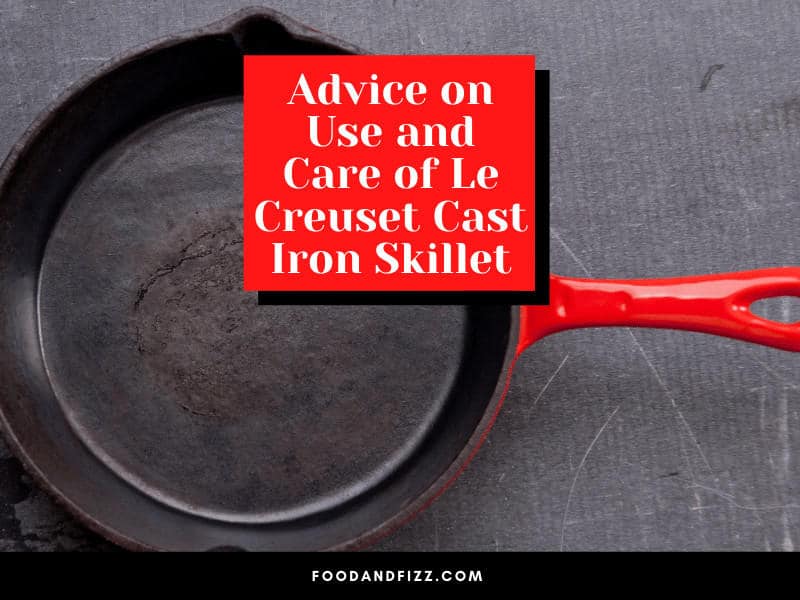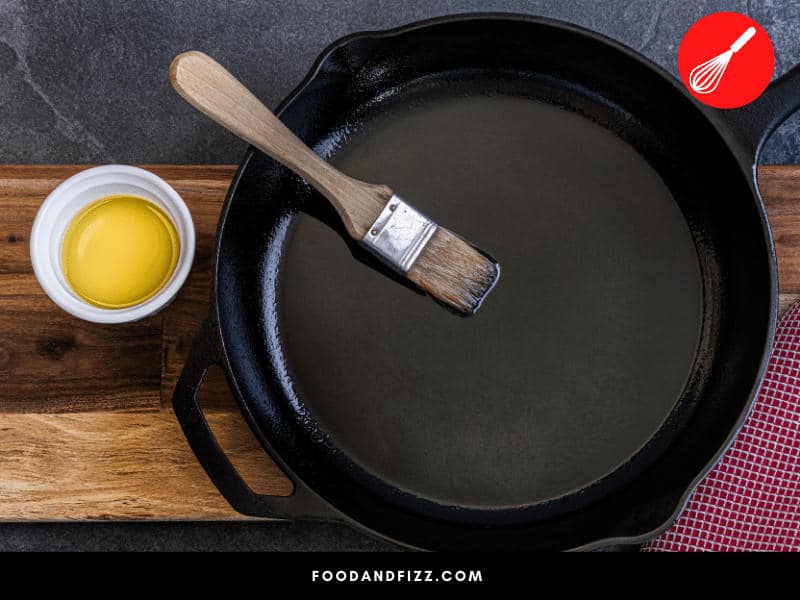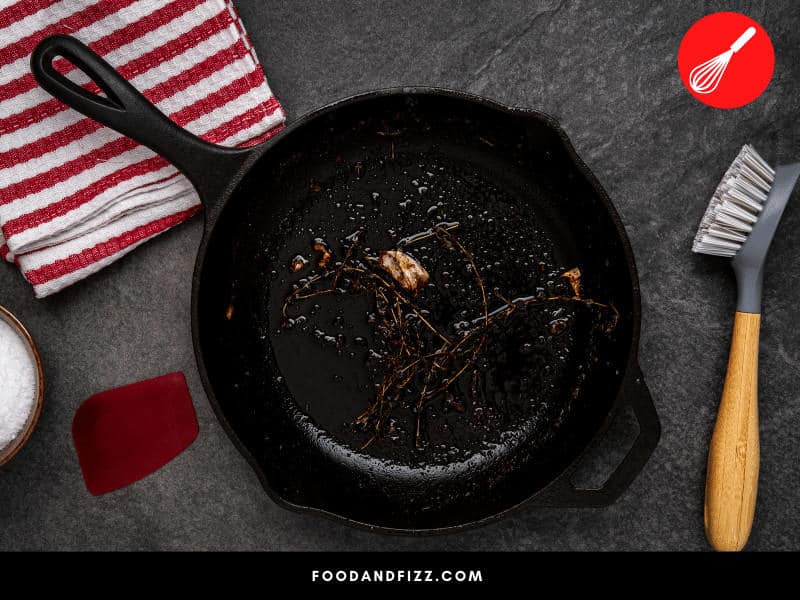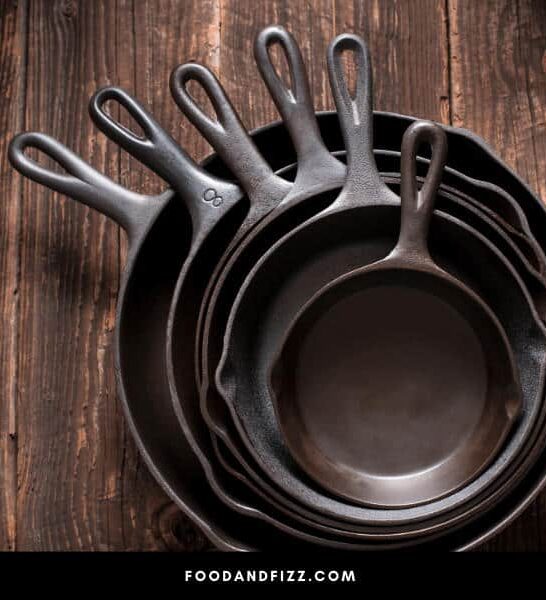Advice On Use and Care of Le Creuset Cast Iron Skillet: Le Creuset cookware is admired for being as beautiful as it is versatile and durable. The Le Creuset cast-iron skillet is the perfect addition to any kitchen and is even used by professional chefs.
To make the most of the skillet, however, you need to take very good care of it and use it the right way.
In this article, we’ll teach you how to use your Le Creuset cast iron skillet correctly and how it should be cleaned to avoid long-term damage.
Advice on Using and Caring for Le Creuset Cast Iron Skillet
Using your Le Creuset iron skillet isn’t very different from a normal skillet, you just need to make sure you never let it fall or scratch it with utensils. To ensure that your skillet will always be in perfect condition, you should clean it with soapy water. If you have any bits of food or burnt-on grease that won’t come off, let the skillet soak for a bit before gently washing it off.As for caring for your skillet, always make sure it’s dry before putting it away to avoid rust. Do not damage the surface of your skillet by forcefully trying to remove food residue.

Using Your Le Creuset Cast Iron Skillet
One of the most important things to remember when using a Le Creuset cast iron skillet is that you have to preheat it. And never leave your skillet unattended when you’re heating it.
You should use medium heat to preheat your skillet for about five minutes before you start adding your food. Don’t preheat it for longer than five minutes because doing so can crack the enamel, ruining the quality of your skillet.
Acceptable Heat Sources
Fortunately, Le Creuset cast iron skillets work well with almost any heat source. You can use it on electric solid plates, gas, induction, coal, wood, or even vitroceramic surfaces. This means you can prepare food on an open fire, on top of hot coals, or on your stove.
Best Heat Settings
When using your Le Creuset cast iron skillet, medium and low heat settings are the best options. These temperatures should be just fine to prepare your food perfectly. Even if you’re searing and frying, you likely won’t need extremely high temperatures.
You should always allow your skillet to warm up gradually and thoroughly. Not only will this ensure a long lifespan for the skillet, but you’ll also enjoy an efficient and even cooking experience.
Do not ever heat an empty skillet – always use butter, fat, or oil and completely cover the base before you start to heat it.

Occasional high heat settings are okay if you’re cooking pasta or vegetables, or reducing the consistency of sauces and stock.
Don’t use high heat to preheat the skillet, though. Doing so will lead to discoloration, unwanted sticking, and poor cooking results. You will also damage the skillet if you use high heat to preheat it and then lower the heat before cooking.
Cleaning and Caring For Your Le Creuset Cast Iron Skillet
If you love your Le Creuset skillet and want it to last many years, you have to take care of it and clean it properly. But don’t worry, we’ve got you covered.
Following is advice and guidance on how you can ensure your skillet is always in the best possible condition so you can cook with it for a long, long time.
Clean Before First Use
The very first thing you need to do before using your skillet (and any quality cookware) is to wash it with some hot water and dish soap. This step will remove any residue left over from the factory or bits of rust from the cookware.
Rinse and dry the skillet well afterward. You won’t have to wash it with soap that often if you look after it well – probably only once or twice a year.
Try To Avoid Thermal Shock
Thermal shock happens when a hot skillet or pan is hit with something cold, like water. It can also happen when something like a very cold glass is put into hot water. This is never a good idea, especially with cookware.
As far as you can, don’t cook over very high heat and when you do, make sure there is liquid in the skillet. To be safe, preheat your skillet on medium heat for five minutes and stick to medium temperatures.
Use Appropriate Utensils
No matter what you do, never use metal utensils when cooking with cast iron cookware. They can damage and scratch the enamel, and this will not only ruin your skillet but also release hazardous chemicals into your food.
When making food with your Le Creuset skillet, only stick to plastic or wooden utensils. Silicone utensils are okay as well.

Wash Properly and Carefully
Don’t put your skillet into cold water as it’s cooling down. Instead, let it cool down completely and then soak it in soapy water. Don’t use steel wool or a wire brush to clean the skillet, they are abrasive and will damage the surface.
Once you’re done cleaning, rinse the skillet well and make sure it is completely dry before putting it away. This will prevent possible rust.
Don’t Let Any Food Dry
Don’t allow any food to dry in your skillet because it will be difficult to clean. If you do have stubborn food particles, soak the skillet in warm water for about 20 minutes and gently remove them.
Use The Right Cleaners
Using just any soap to clean your Le Creuset cast iron skillet won’t do. For best results, use a mild dishwashing liquid such as Palmolive or Dawn. Stick to warm water and soft sponges as well.

Cleaning The Outside
Your skillet’s outside enamel coating is just as delicate as the coating on the inside. Never use abrasive cleaners or scourers to clean the outside – you will damage the surface and cause stains. Use the same method that you use on the inside to clean the outside.
Storing Your Le Creuset Cast Iron Skillet
Store your skillet separately so it doesn’t scratch and use pot protectors to avoid damage.

Have Fun with Your Le Creuset Cast Iron Skillet
Le Creuset cast iron skillets are made to last many years and help you make delicious, high-quality food. As long as you take good care of your skillet and clean it properly, you will be using it often and with joy. Follow the advice shared here and delight yourself (and your family) with mouth-watering food made in a dependable French-made skillet.
Frequently Asked Questions About Use and Care of Le Creuset Cast Iron Skillet
Does Le Creuset Cast Iron Need to Be Seasoned?
Seasoning is typically necessary for cooking, but you do not have to worry about seasoning your Le Creuset skillet. It is encased in an enamel coating that makes it perfect for grilling without seasoning. Le Creuset has specifically made this skillet, so there’s no need to season it before using it.
Do Chefs Use Le Creuset?
Many chefs who work in restaurants like to use Le Creuset cast iron skillets because of their high quality and versatility. It’s great for searing, frying, and a lot more.
Where Are Le Creuset Skillets Made?
Originally, Le Creuset skillets came from France and they still do. All the cast iron pieces are made in the company’s original foundry located in Fresnoy-le-Grand, France.

